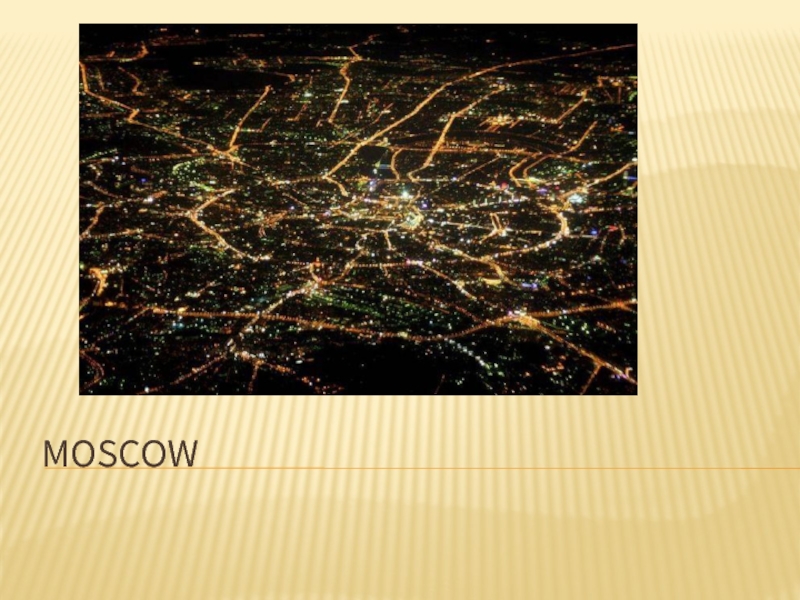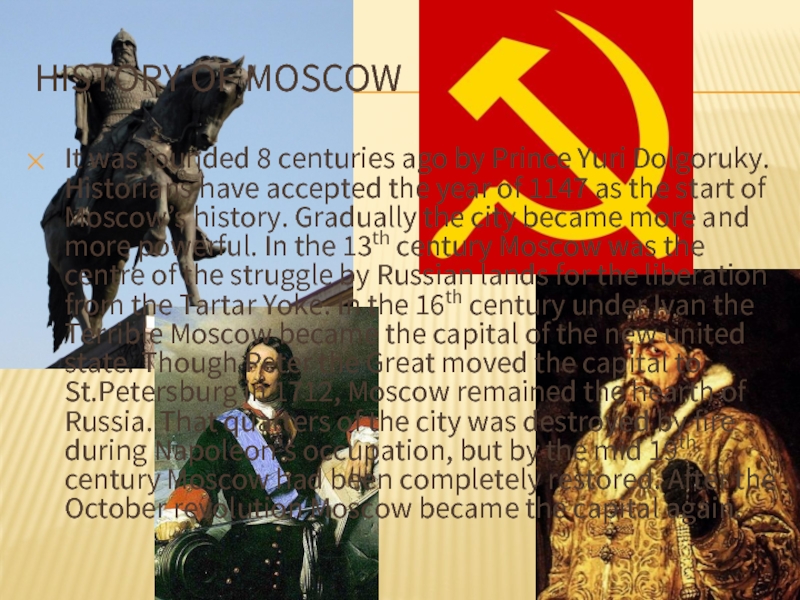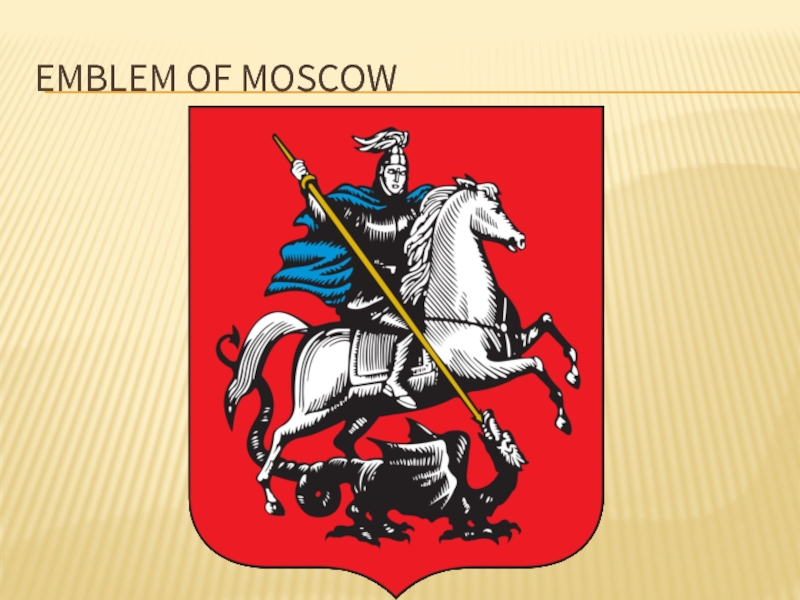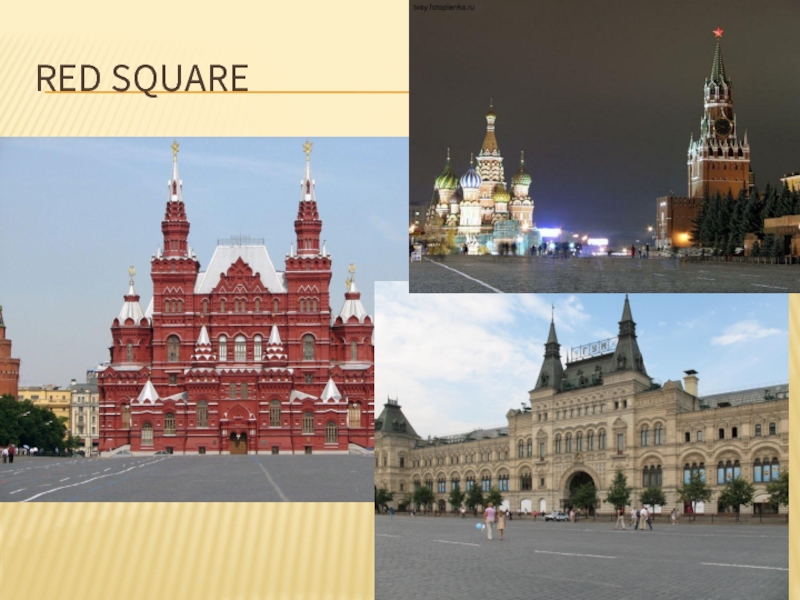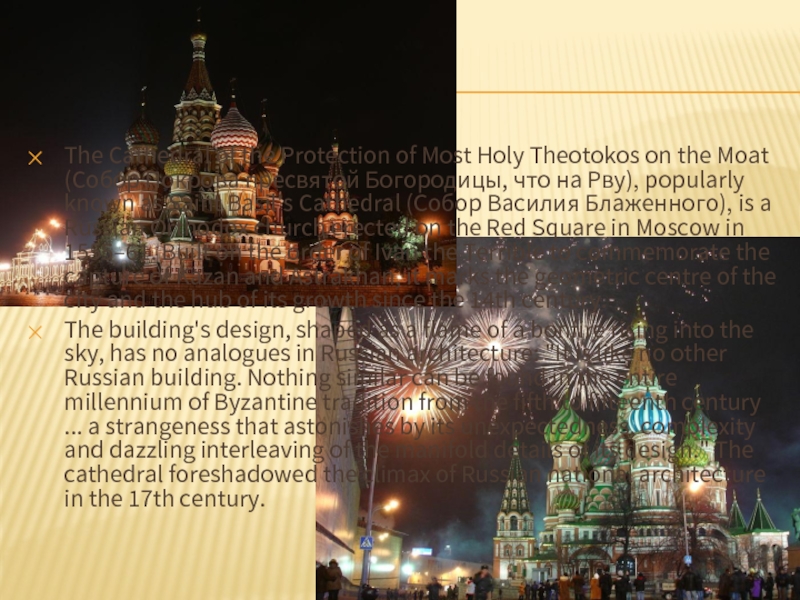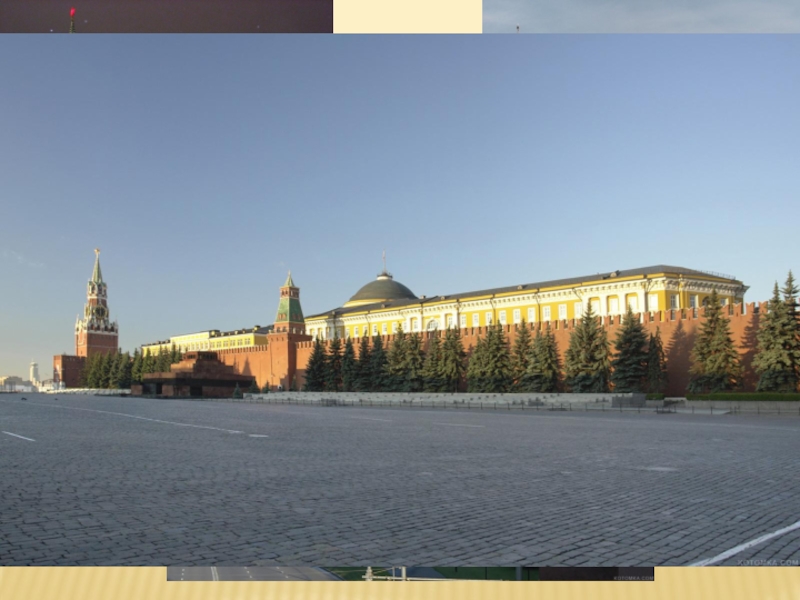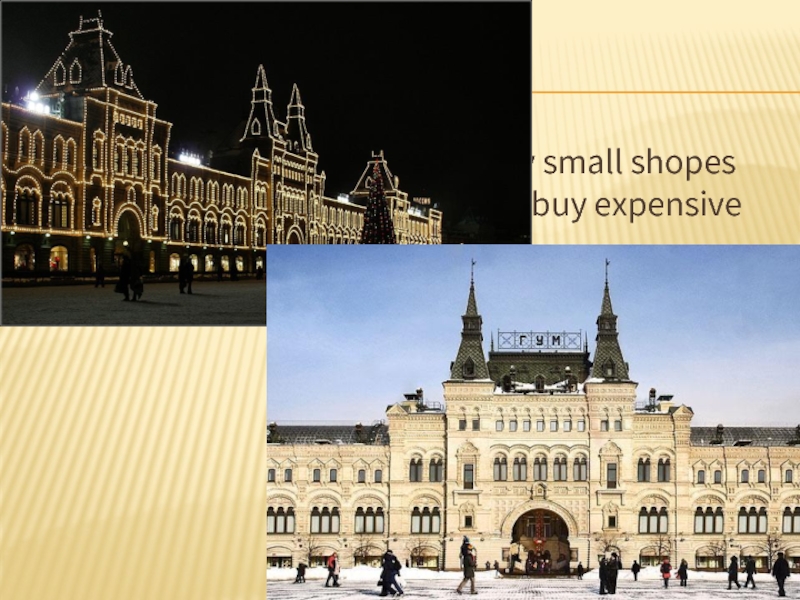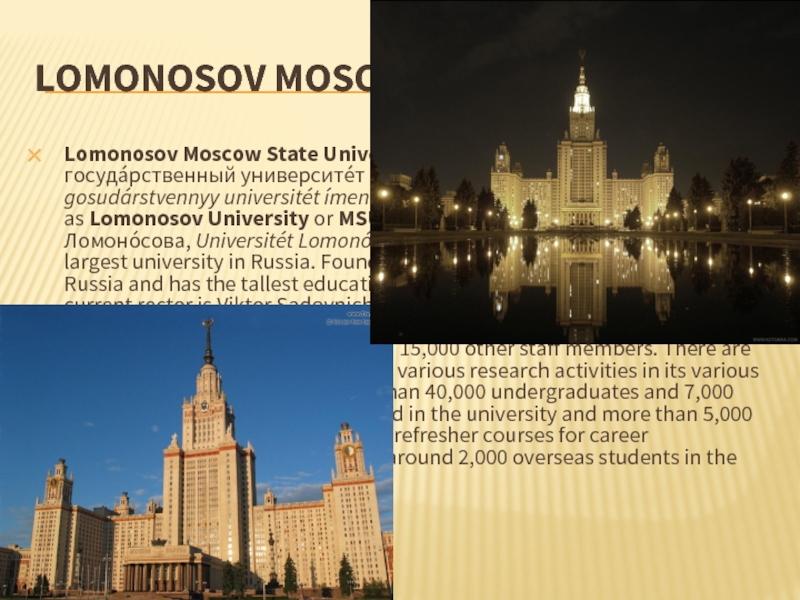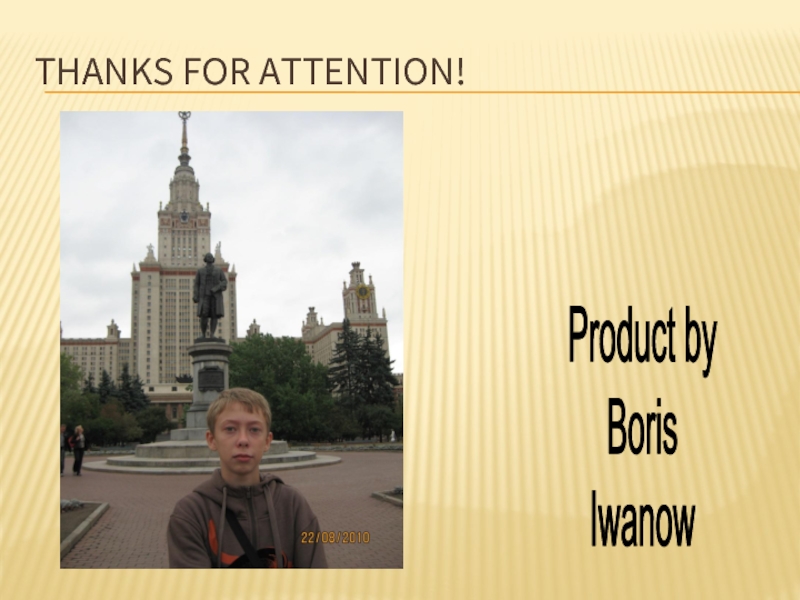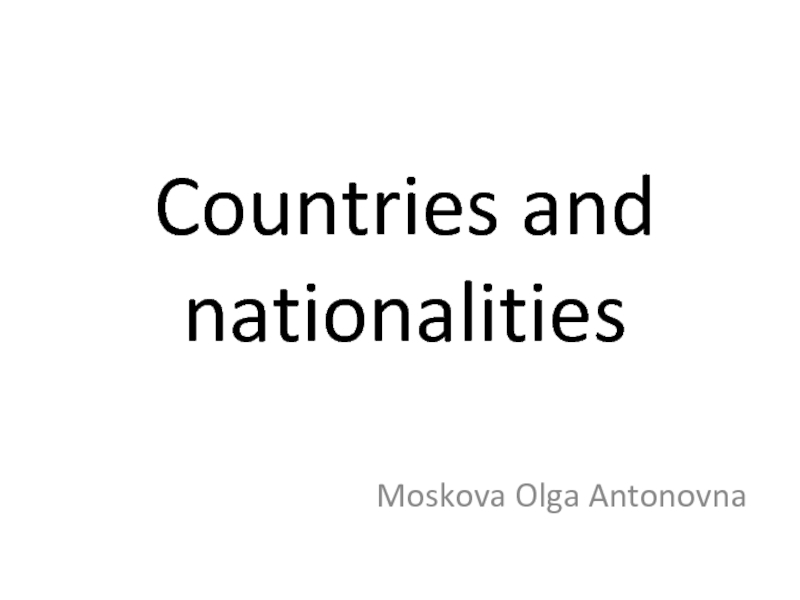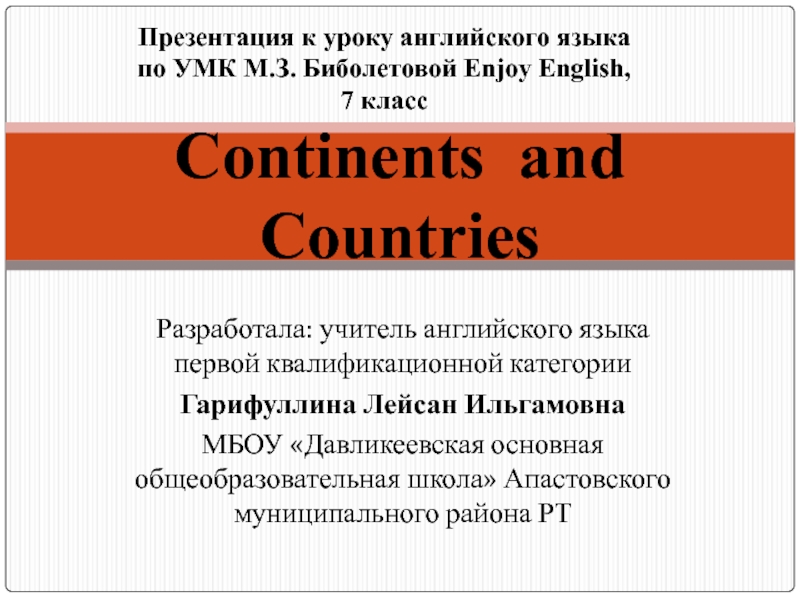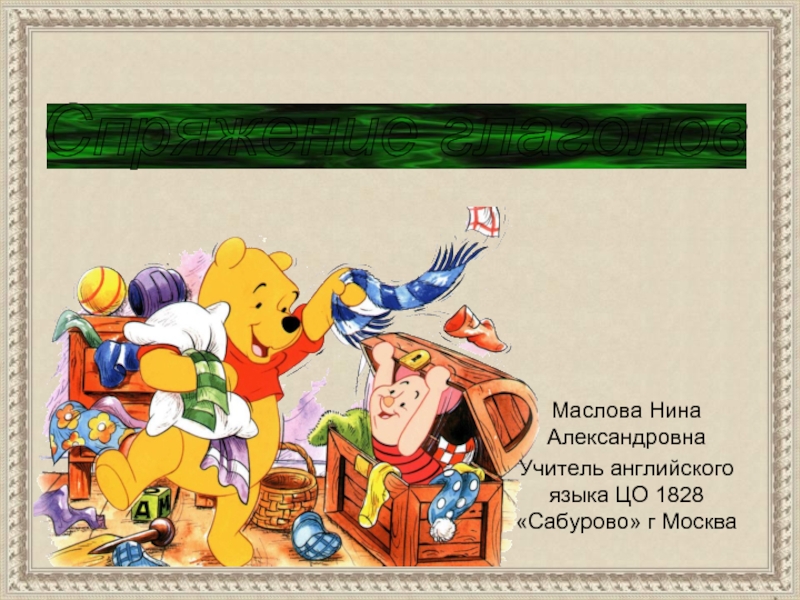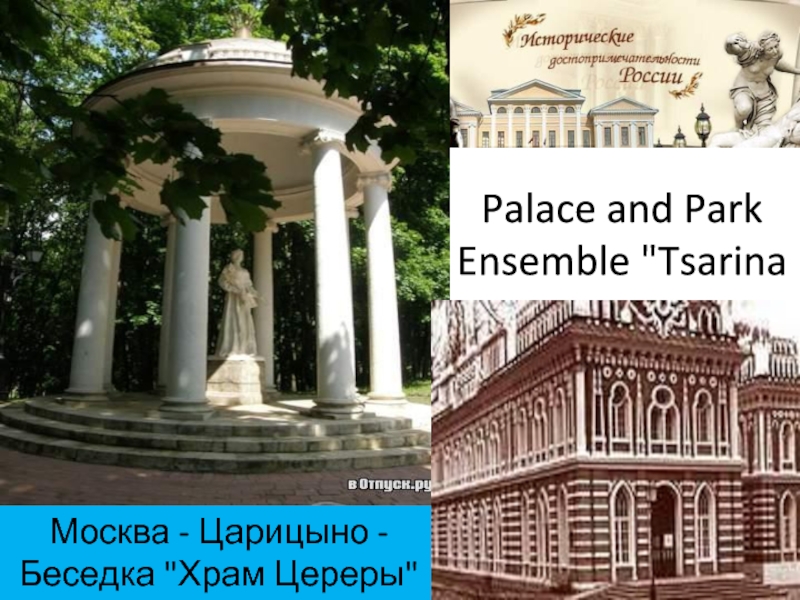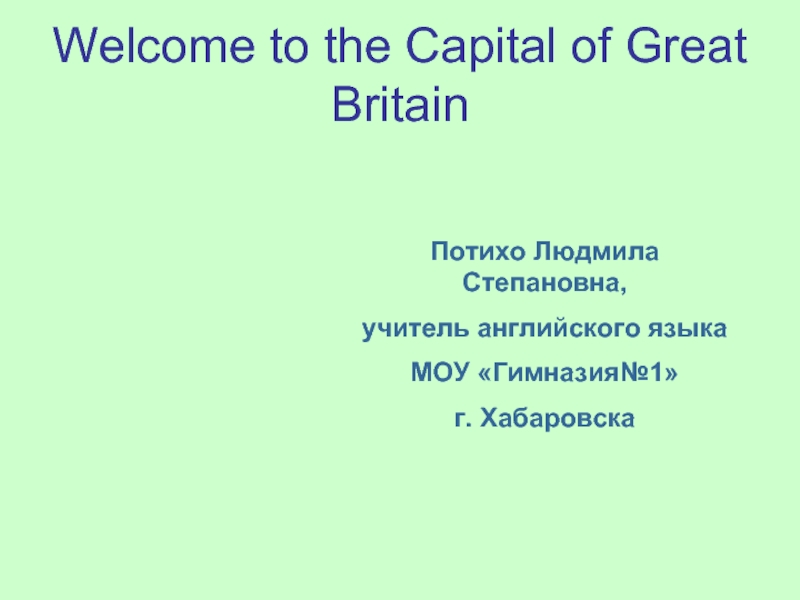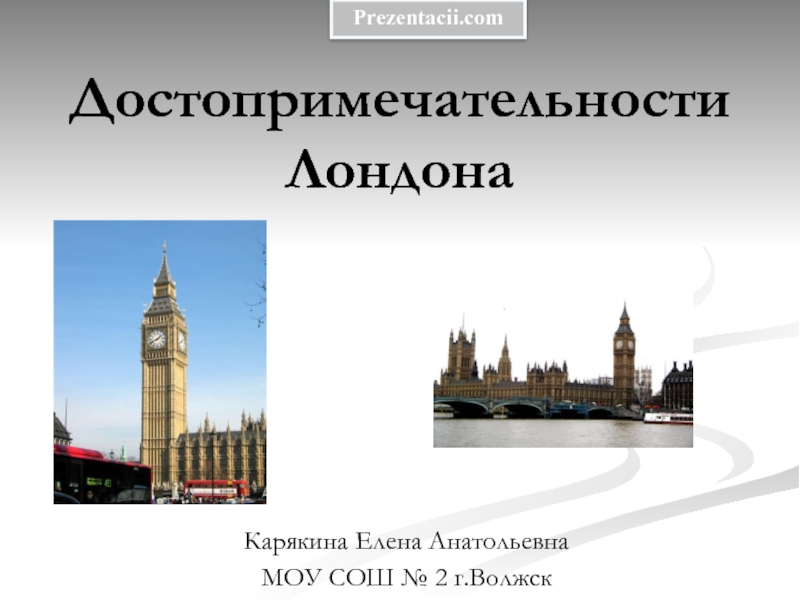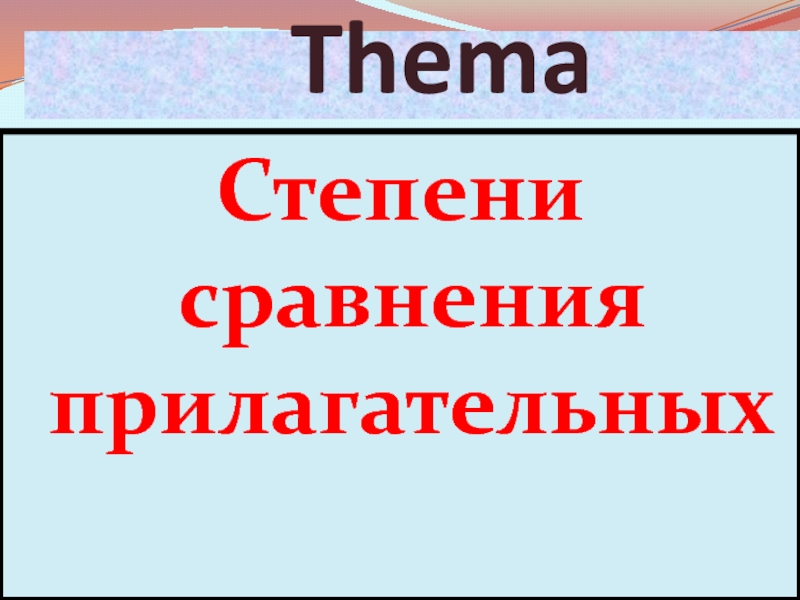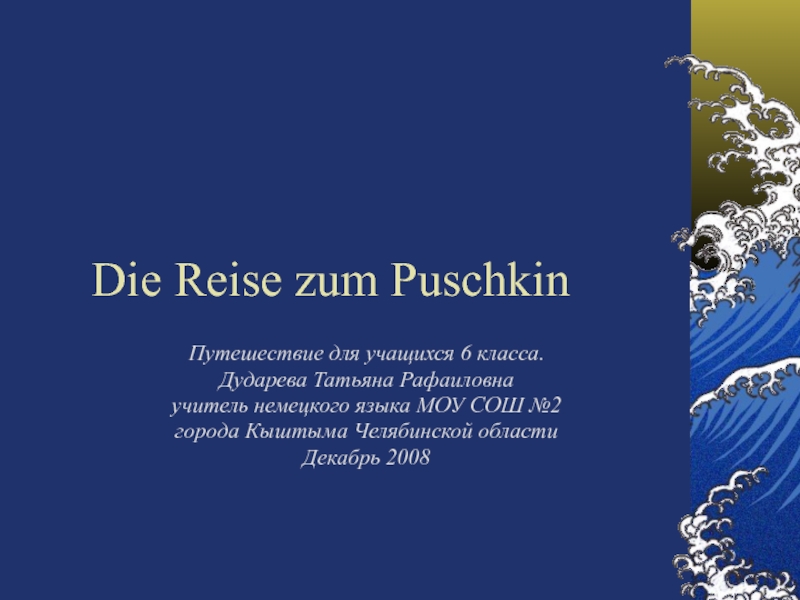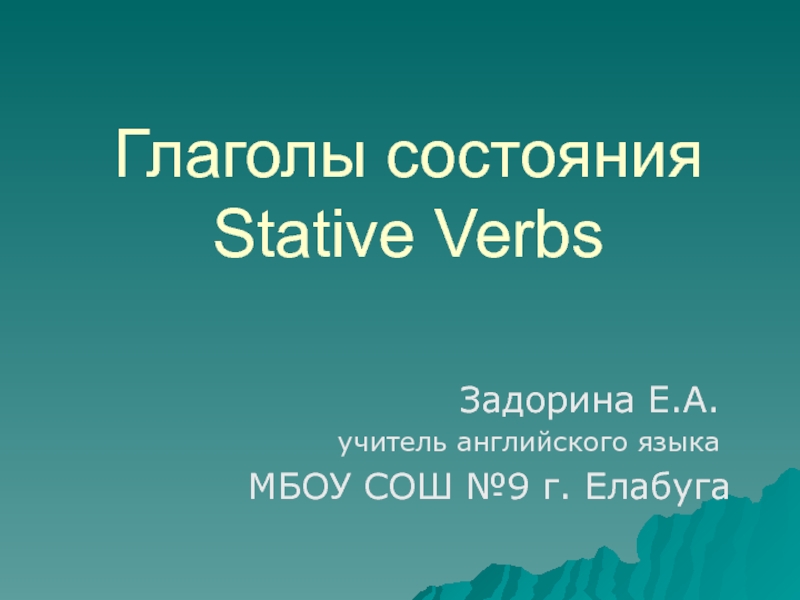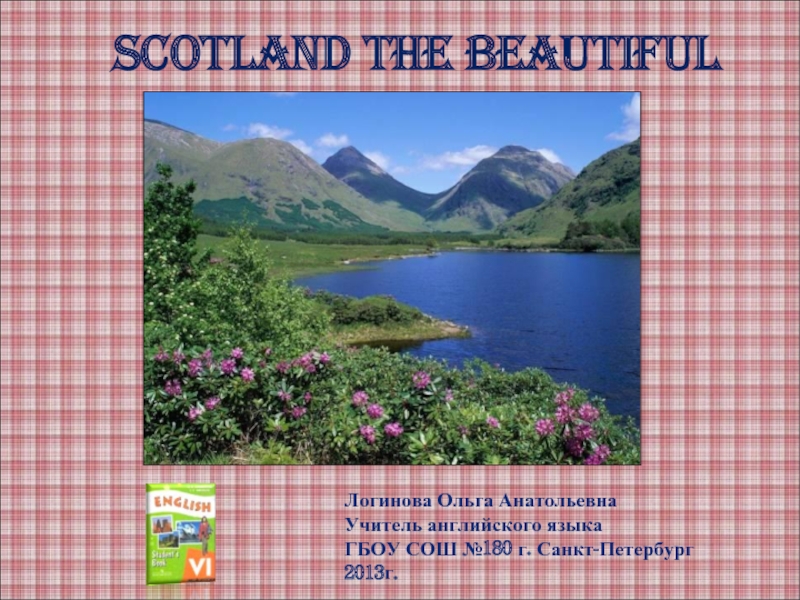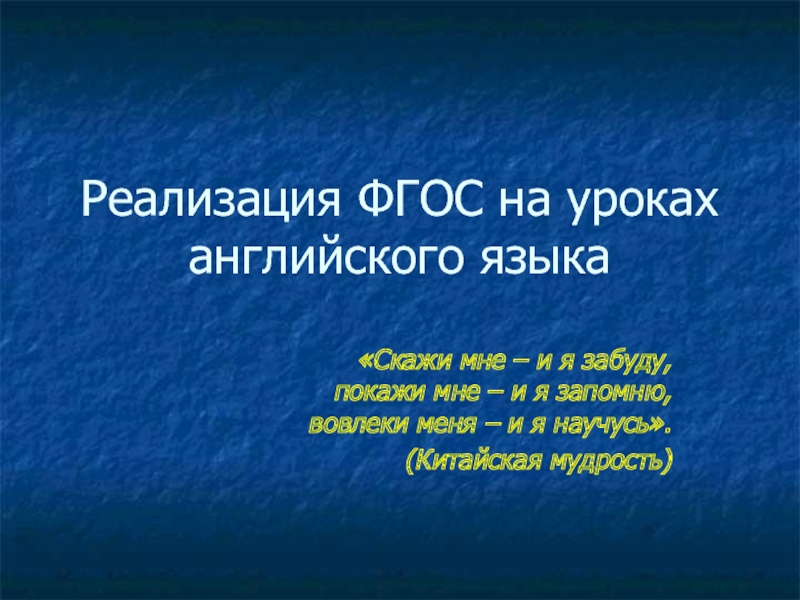Слайд 2It was founded 8 centuries ago by Prince Yuri Dolgoruky.
Historians have accepted the year of 1147 as the start
of Moscow’s history. Gradually the city became more and more powerful. In the 13th century Moscow was the centre of the struggle by Russian lands for the liberation from the Tartar Yoke. In the 16th century under Ivan the Terrible Moscow became the capital of the new united state. Though Peter the Great moved the capital to St.Petersburg in 1712, Moscow remained the hearth of Russia. That quarters of the city was destroyed by fire during Napoleon’s occupation, but by the mid 19th century Moscow had been completely restored. After the October revolution Moscow became the capital again.
History of Moscow
Слайд 4Red Square
Russian name: Красная площадь.
Saint Basil's Cathedral, the Moscow Kremlin,
Historical Museum and GUM are located in Red Square
Слайд 5Saint Basil's Cathedral
The Cathedral of the Protection of Most Holy
Theotokos on the Moat (Собор Покрова пресвятой Богородицы, что на
Рву), popularly known as Saint Basil's Cathedral (Собор Василия Блаженного), is a Russian Orthodox church erected on the Red Square in Moscow in 1555–61. Built on the order of Ivan the Terrible to commemorate the capture of Kazan and Astrakhan, it marks the geometric centre of the city and the hub of its growth since the 14th century.
The building's design, shaped as a flame of a bonfire rising into the sky, has no analogues in Russian architecture: "It is like no other Russian building. Nothing similar can be found in the entire millennium of Byzantine tradition from the fifth to fifteenth century ... a strangeness that astonishes by its unexpectedness, complexity and dazzling interleaving of the manifold details of its design." The cathedral foreshadowed the climax of Russian national architecture in the 17th century.
Слайд 6Moscow Kremlin
The Moscow Kremlin (Russian: Московский Кремль, Moskovskiy Kreml), sometimes referred to as
simply The Kremlin, is a historic fortified complex at the heart
of Moscow, overlooking the Moskva River (to the south), Saint Basil's Cathedral and Red Square (to the east) and the Alexander Garden (to the west). It is the best known of kremlins (Russian citadels) and includes four palaces, four cathedrals and the enclosing Kremlin Wall with Kremlin towers. The complex serves as the official residence of the President of the Russian Federation.
Слайд 7State Historical Museum
The State Historical Museum of Russia is a museum of Russian history wedged
between Red Square and Manege Square in Moscow. Its exhibitions range from relics of
the prehistoric tribes inhabiting present-day Russia, through priceless artworks acquired by members of the Romanov dynasty. The total number of objects in the museum's collection numbers in the millions.
Notable items include a longboat excavated from the banks of the Volga River, gold artifacts of the Scythians, birch-bark scrolls of Novgorod, manuscripts going back to the 6th century, Russian folk ceramics, and wooden objects. The library boasts the manuscripts of the Chludov Psalter (860s), Svyatoslav‘s Miscellanies (1073), Mstislav Gospel (1117), Yuriev Gospel (1119), and Halych Gospel (1144). The museum's coin collection alone includes 1.7 million coins, making it the largest in Russia. In 1996, the number of all articles in the museum's collection achieved 4,373,757.
A branch of the museum is housed in the Romanov Chambers is Zaryadye and Saint Basil's Cathedral. In 1934 The Museum of Women's Emancipation at the Novodevichy Convent became part of the State Historical Museum. Some of the churches and other monastic buildings are still affiliated with the State Historical Museum.
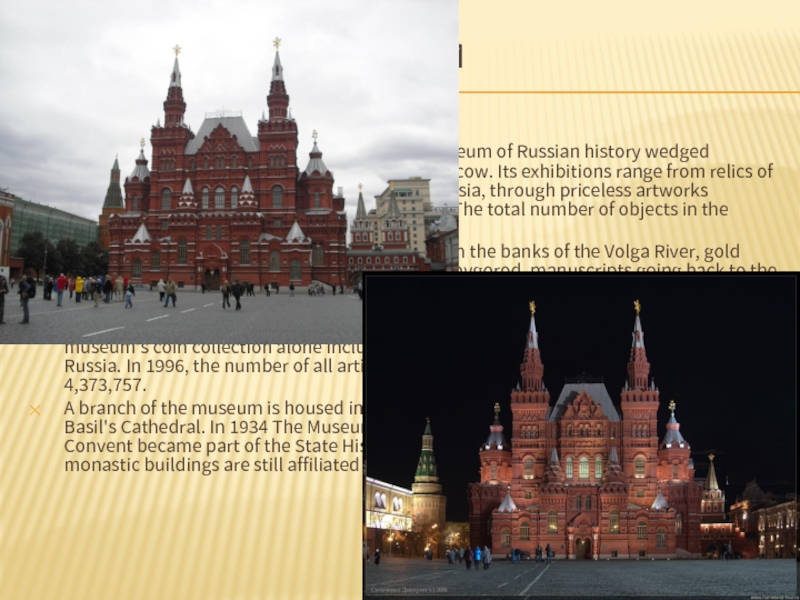
Слайд 8GUM
GUM is very very big shop. Many small shopes are
located in GUM. People can buy expensive things in GUM.
Слайд 9The Tretyakov Gallery
The State Tretyakov Gallery (Russian: Государственная Третьяковская Галерея, Russian: ГТГ) is an art
gallery in Moscow, Russia, the foremost depository of Russian fine art in the world.
The gallery's
history starts in 1856 when the Moscow merchant Pavel Mikhailovich Tretyakov acquired works by Russian artists of his day with the aim of creating a collection, which might later grow into a museum of national art. In 1892, Tretyakov presented his already famous collection to the Russian nation.
The façade of the gallery building was designed by the painter Viktor Vasnetsov in a peculiar Russian fairy-tale style. It was built in 1902–04 to the south from the Moscow Kremlin. During the 20th century, the gallery expanded to several neighboring buildings, including the 17th-century church of St. Nicholas in Tolmachi.
The collection contains more than 130,000 exhibits, ranging from Theotokos of Vladimir and Andrei Rublev's Trinity to the monumental Composition VII by Wassily Kandinsky and the Black Square by Kazimir Malevich.
In 1977 the Gallery kept a significant part of the George Costakis collection.
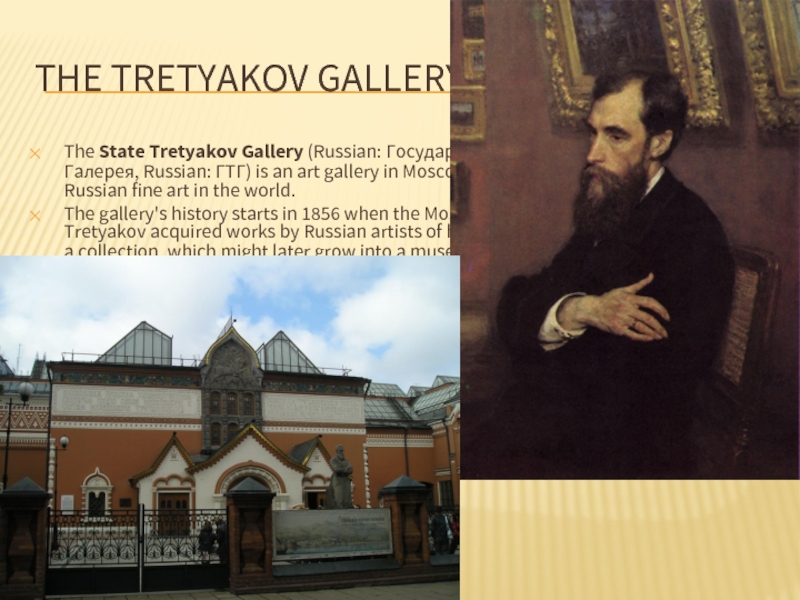
Слайд 10Lomonosov Moscow State University
Lomonosov Moscow State University (Russian: Моско́вский госуда́рственный университе́т и́мени
М. В. Ломоно́сова, Moskóvskiy gosudárstvennyy universitét ímeni M. V. Lomonósova), previously
known as Lomonosov University or MSU (Russian: университе́т Ломоно́сова, Universitét Lomonósova; Russian: МГУ, MGU), is the largest university in Russia. Founded in 1755, it is the oldest university in Russia and has the tallest educational building in the world. Its current rector is Viktor Sadovnichiy. In 1940, the university was renamed in honor of its founder, Mikhail Lomonosov. Currently the university employs more than 4,000 academic staff and 15,000 other staff members. There are about 5,000 researchers engaged in various research activities in its various institutes and departments. More than 40,000 undergraduates and 7,000 postgraduates are currently enrolled in the university and more than 5,000 specialists are participating in their refresher courses for career enhancement purposes. There are around 2,000 overseas students in the university.
Слайд 11Thanks for attention!
Product by
Boris
Iwanow
